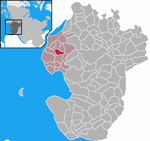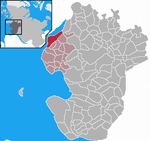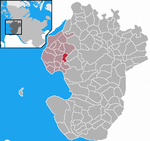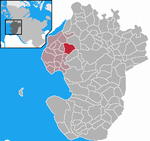Wesselburen (Amt Kirchspielslandgemeinde)
Dithmarschen geography stubsFormer Ämter in Schleswig-Holstein

Kirchspielslandgemeinde Wesselburen was an Amt ("collective municipality") in the district of Dithmarschen, in Schleswig-Holstein, Germany. On 25 May 2008, it merged with the Amt Kirchspielslandgemeinde Büsum and the town Wesselburen to form the Amt Büsum-Wesselburen. Its seat was in Wesselburen, itself not part of the Amt. The Amt Kirchspielslandgemeinde Wesselburen consisted of the following municipalities (with population in 2005): Friedrichsgabekoog (71) Hellschen-Heringsand-Unterschaar (169) Hillgroven (86) Norddeich (430) Oesterwurth (274) Reinsbüttel (427) Schülp (489) Strübbel (96) Süderdeich (536) Wesselburener Deichhausen (142) Wesselburenerkoog (151)
Excerpt from the Wikipedia article Wesselburen (Amt Kirchspielslandgemeinde) (License: CC BY-SA 3.0, Authors, Images).Wesselburen (Amt Kirchspielslandgemeinde)
Dohrnstraße, Büsum-Wesselburen
Geographical coordinates (GPS) Address Nearby Places Show on map
Geographical coordinates (GPS)
| Latitude | Longitude |
|---|---|
| N 54.217 ° | E 8.917 ° |
Address
Dohrnstraße
Dohrnstraße
25764 Büsum-Wesselburen
Schleswig-Holstein, Germany
Open on Google Maps











